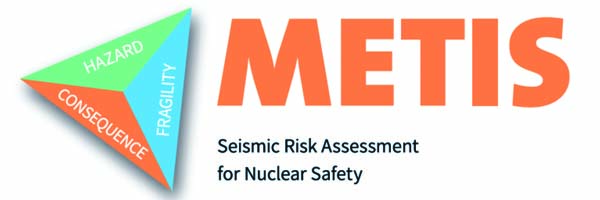
Methods and tools innovations for seismic risk assessment
The proposed project intends to translate research to practice through rigorous and efficient methodologies and tools to assess seismic safety of NPP. It also has the aim to innovate current practice by supporting simulation results with experimental data and experience feedback in the framework of Bayesian approaches and machine learning. The research will develop methods to improve the predictability of (non linear, best-estimate) beyond design analyses (design extension earthquakes). The refined seismic PSA provides meaningful support in the decision making process and could be useful for real time expertise of plant safety in case of temporary unavailability of safety relevant equipment or structures. It is also proposed to develop efficient tools to identify major contributors to risk such that efforts to increase safety and resistance are focused on relevant equipment. The outcome will thus increase the reliability of the analyses and in turn increase confidence in the probabilistic and deterministic safety assessment results. The results of this project will then help nuclear operators in their periodic safety reviews and to respond to the high-level EU-wide safety objectives of the amended EURATOM nuclear safety directive (stress tests). The considered accident scenarios will provide input for updating severe accident management guidelines (SAMG).
Project Funding
European Commission – Nuclear Fission and Radiation Protection Research
Horizon 2020
NFRP-2019-2020-03
Collaborators
Electricite De France
EDF Energy R&D UK Centre Limited
Limited Liability Company Energorisk
Fondazione GEM
Helmholtz Zentrum Potsdam Deutschesgeoforschungszentrum GFZ
GDSIS
Unstitut de Radioprotection et de Surete Nucleaire
Instituro Univeritario di Studi Superiori di Pavia
LGI Consulting
National Technical University of Athens – NTUA
State Enterprise State Scientific and Technical Center for Nuclear and Radiation Safety
Technische Iniversitaet Kaiserslautern
Univerza V Ljubljani
Geo-Research Institute
North Carolina State University
Pacific Earthquake Engineering Research Center
Time Period
Sept 2020 – Aug 2024
Relevant Publications
METIS Members






